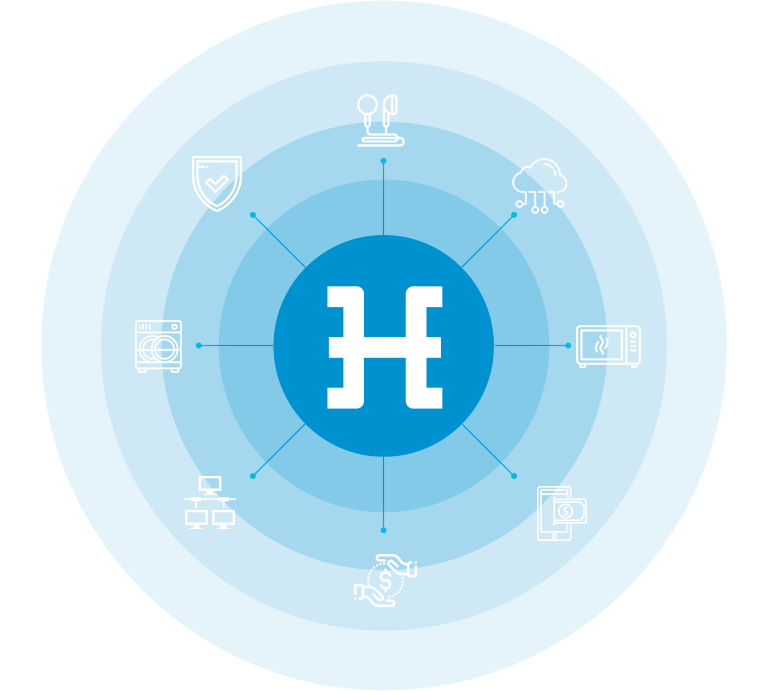Hdac: Designing IoT Contract on The Blockchain

"The internet of things (IoT) economy is upon us and Hdac help make these non-disparate devices talk and interact seamlessly"
The Internet of Things (IoT) is not exactly a product or service, but rather a network. The devices will need to communicate with one another in order to stay relevant in the extremely fast-paced IoT market. They need a complex infrastructure and network to ensure they meet consumer expectations and work properly.
IoT will also drive innovation in the payment space while forcing traditional methods to become more agile and adaptive. IoT and Machine-to-Machine (M2M) will deliver this and consistently deliver the user experience, transacting on our behalf. Payment systems that support M2M payments will have to be built on a trusted and secure network to help facilitate these transactions.
Internet of Things applications also mean distributed application, which blockchain will play a role in how devices will communicate directly between each other (keeping a ledger and trail of not just devices but also how they interact and, potentially, in which state they are and how they are ‘handled’).
Blockchain is designed as a basis for applications that involve transaction and interactions. These can include a contract that automatically carried out when a specific condition is met, for instance regarding the conditions of goods or environmental conditions, or to support specific Internet of Things processes. This way, blockchain technology can improve not just compliance in the IoT but also IoT features and cost-efficiency.
HDAC IoT Contract
Hdac is an IoT contract platform based on the blockchain, which not only exchanges but also can restrict the usage according to the purpose as it is ‘Smart Coin’ which controls the connected devices.
IoT (Internet of Things) contract is a ‘Machine to Machine’ (M2M) service that controls all the devices. It is a concept expanded from the object of ‘Smart Contract’ to the ‘IoT Device,’ where the programmer, when creating a Smart Contract, shares the address of the device which will be controlled on the blockchain network through Hdac.
Connected devices offer an unprecedented amount convenience, and people are prepared to pay for that convenience — seamless, frictionless experiences in which machines make rules-based decisions and payments are invisible. For example, the automatic re-stock action set up for your dog food.
“IoT” payments are the way to give control back to the consumer.
Hdac gives consumers control of the autonomous rules that determine the payments and when they happen, as well as the contexts of those payments, so they understand what the payments come from.
When consumer trust in connected devices, they’re letting machines make more and more decisions for them, keeping that trust is essential. Which means that security is the biggest technological barrier to overcome across the entire IoT ecosystem. That’s why Hdac building a hybrid Blockchain to maintain core principles of privacy and security while remain satisfy your connectivity, from user to device, is nestled among the safest of environments.
All the process will be handled from private to public and back again, Hdac Hybrid Blockchain is configured as a hidden network with safe tunneling between a user and device to combat hacks, privacy invasions and external attacks. Remember, mutual authentication between device and user is crucial for a reliable Private Blockchain, which fundamentally will only be practical if it interacts with the Public Blockchain.